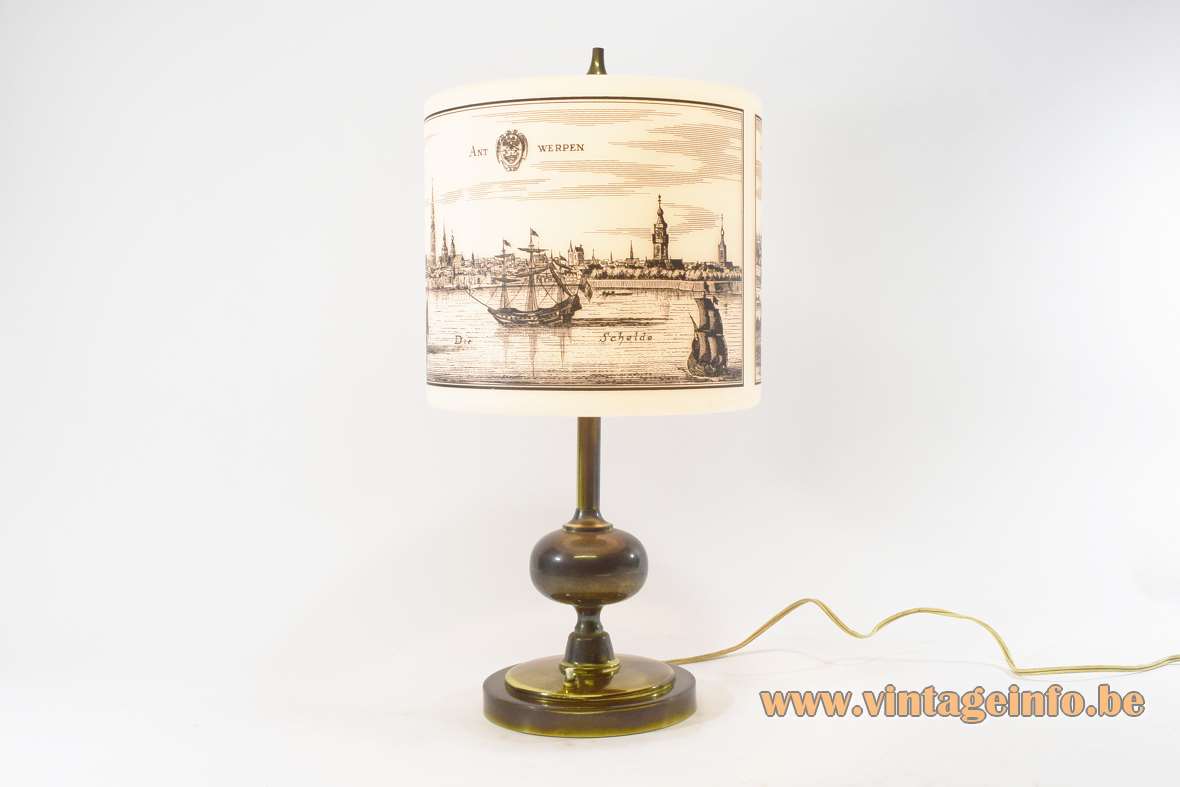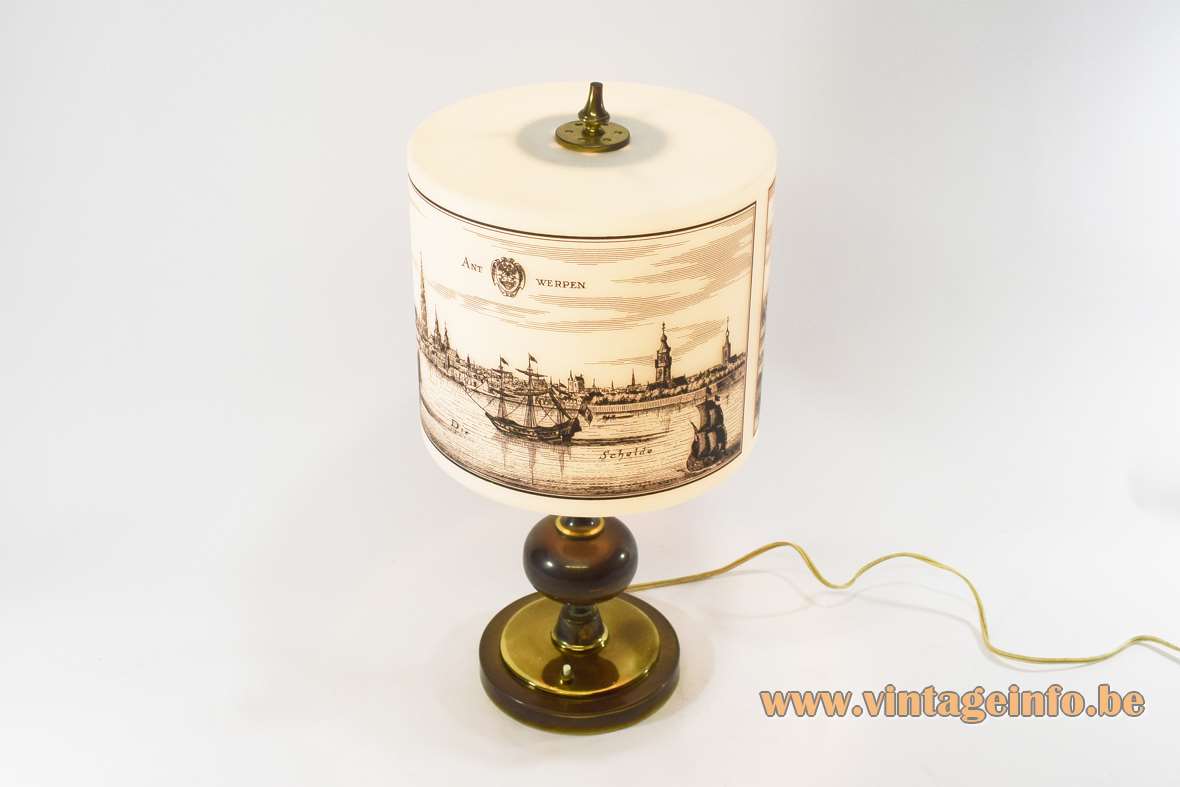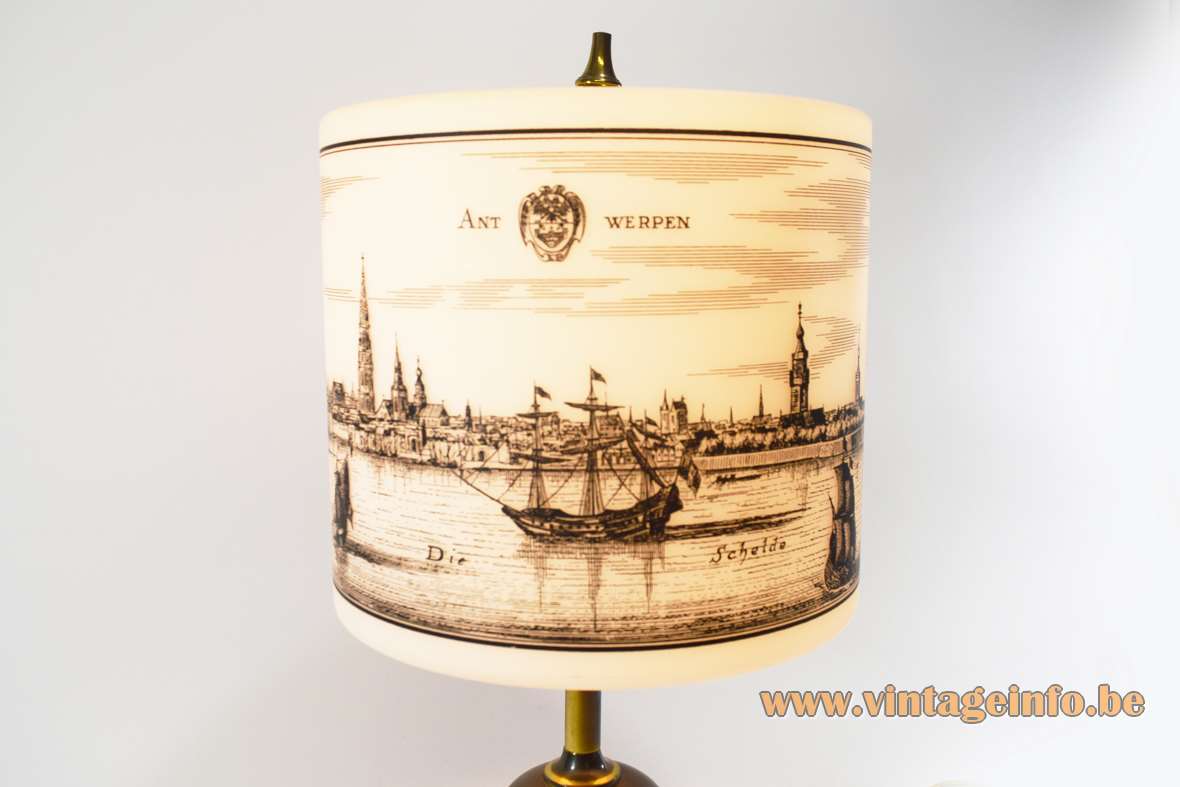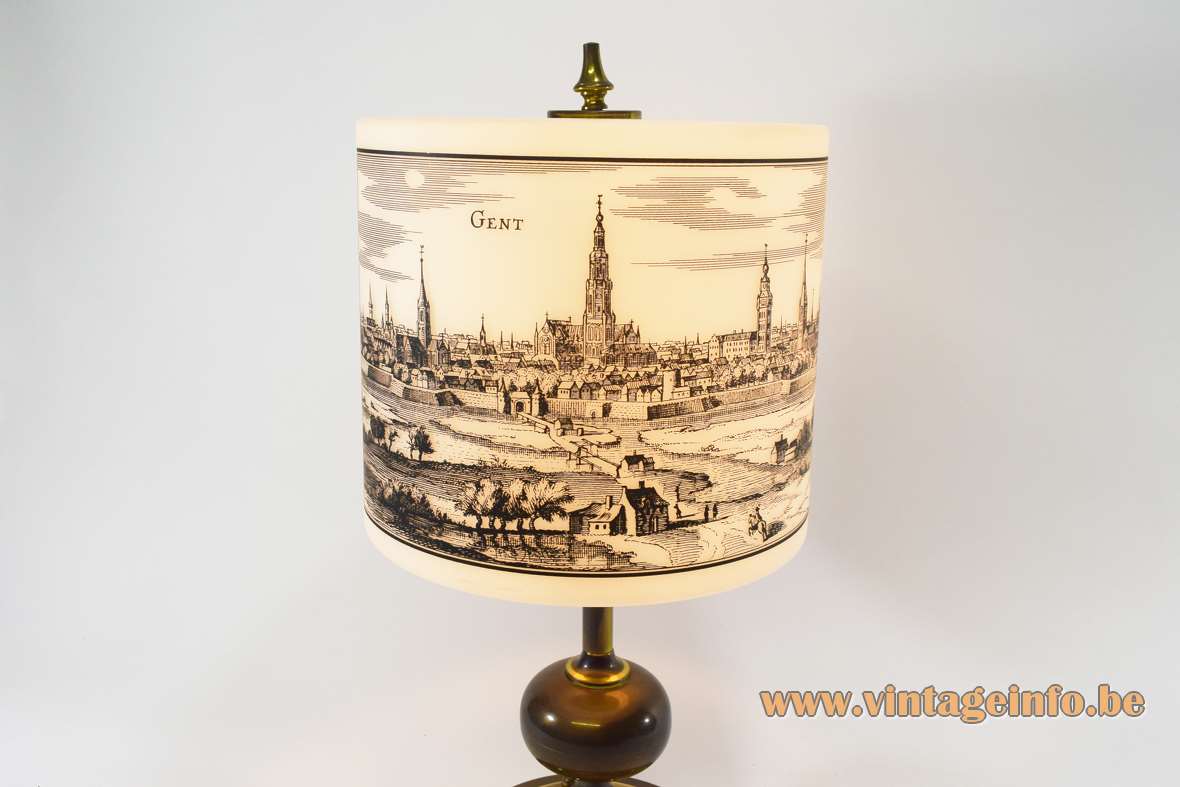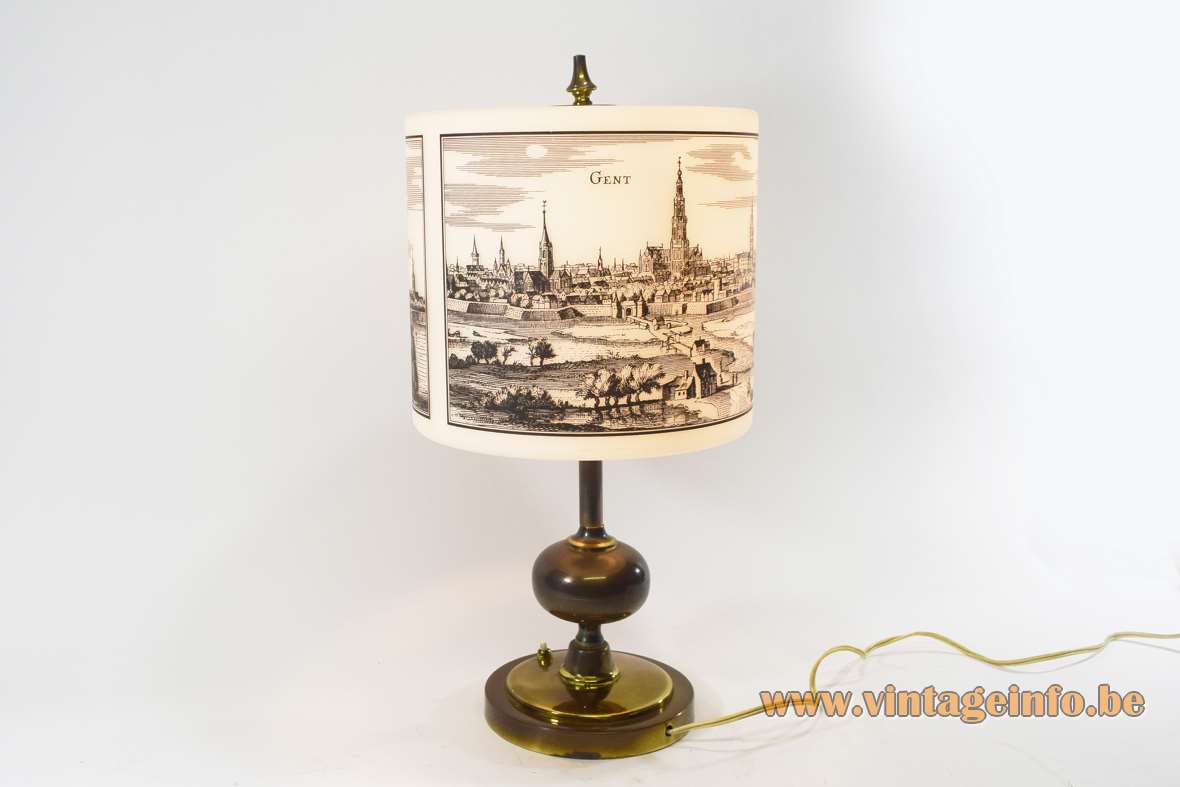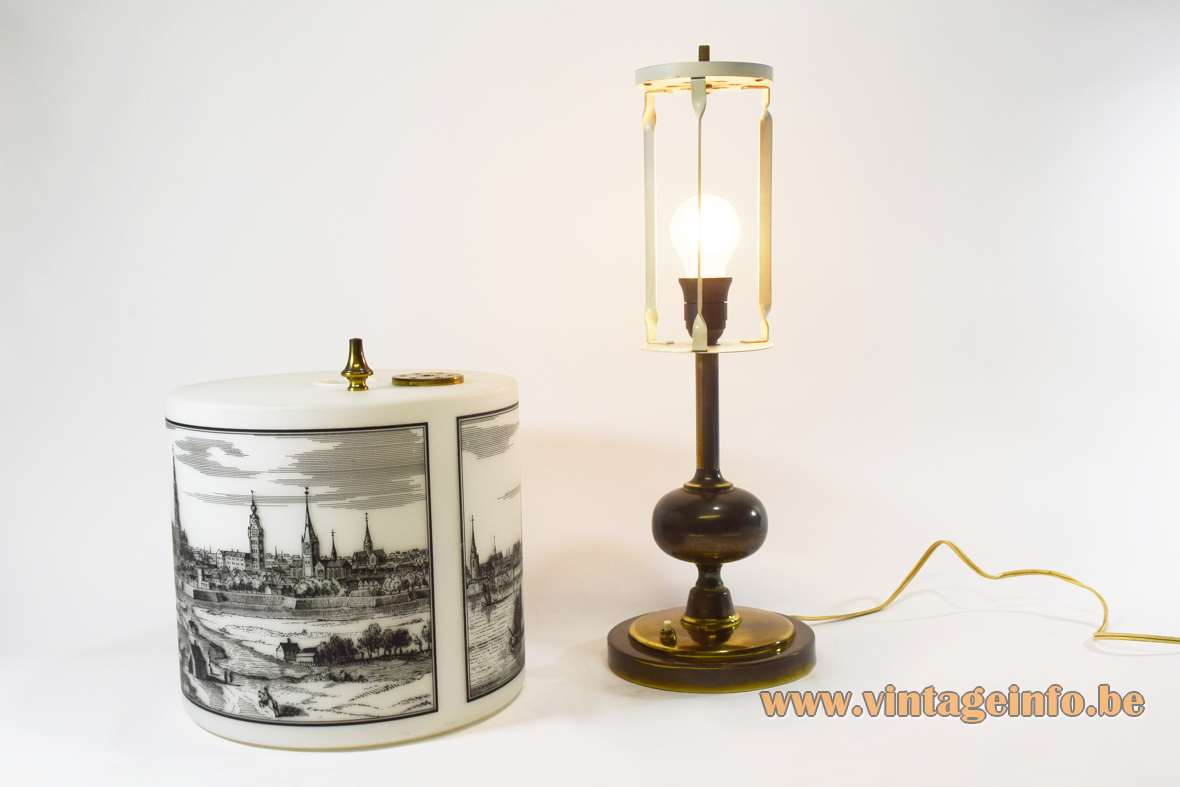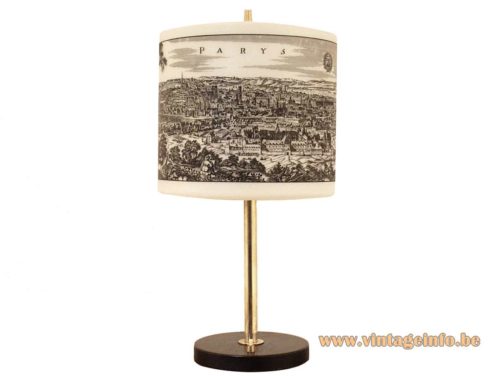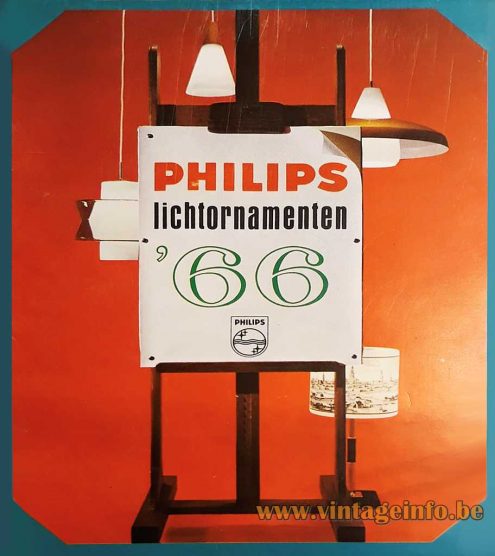Links (external links open in a new window)
List of most populous municipalities in Belgium – Wikipedia
The complete history of the company on the Philips website
The Evoluon building – Wikipedia
Website of the Philips Museum in Eindhoven
Vintageinfo
Antwerp – Ghent, Belgium 1950s Table Lamp
Materials: Round brass base with an oval globe in the middle. Some white painted metal parts. Round tubular opal glass lampshade with a medieval city print. Bakelite E27 socket.
Height: 54 cm / 21.25”
Width: ∅ 28 cm / 11.02”
Base: ∅ 18 cm / 7.08”
Electricity: 1 bulb E27, 1 x 60 watt maximum, 110/220 volt.
Any type of light bulb can be used, not a specific one preferred.
Period: 1950s, 1960s, 1970s.
Designer: To be appraised.
Manufacturer: Philips, Eindhoven, The Netherlands.
Other versions: This Antwerp – Ghent, Belgium 1950s table lamp was made with different prints, also from other cities, or without. Often with this medieval drawings. Text on this lamp is: Antwerpen – Die Schelde (Antwerp – the Scheldt) and Gent on the other side.
These lamps exists with publicity for beers, pubs and so on. Also on this page, a lamp with a Paris decoration; written in old Dutch. Parys instead of Parijs. It is a more recent version from the seventies with a different rod. Over the years different lamp bases were used with the same lampshades.
These table lamps were often spotted in bars, pubs, taverns and restaurants in Belgium in the 1950s, 1960s, 1970s and 1980s. Antwerp and Ghent are the two most populated cities in Flanders, Belgium.
In all probability these lamps were produced in Leuven or Turnhout, two cities in Belgium were Philips produced lighting. A newer version of this table lamp appears in a Philips catalogue from 1966.
Koninklijke Philips N.V.
Inspired by the fast-growing electricity industry and the promising results of Gerard Philips own experiments to make reliable carbon filaments, Frederik Philips (his father) financed the purchase of a modest factory in Eindhoven, The Netherlands in 1891. Frederik Philips was a Jewish banker based in Zaltbommel.
In 1895, after difficult first four years and near bankruptcy, Anton Philips joined the company. He was Gerard’s younger brother. With Anton’s arrival, the family business began to expand rapidly. The brothers changed their family business by founding the Philips corporation. They laid the foundations for the later electronics multinational.
A day before the German invasion in the Netherlands on 9 Mai 1940, the Philips family fled to the United States of America. They took a large amount of the company capital with them.
Operating from the US as the North American Philips Company, they managed to run the company throughout the war. After World War II the company moved back to the Netherlands, with their headquarters in Eindhoven.
Louis Christiaan Kalff (Amsterdam, November 14th 1897 – Waalre, September 16th, 1976)
Louis Kalff was a pioneering industrial designer in the Netherlands during the first half of the 20th century. With a solid background including studies in sculpture, ceramics, furniture design and architecture, he began to work for the Philips company in 1924, department consumer electronics company marketing.
In 1929 he started a department for design of lighting products (LIBU – Lichtadviesbureau (Dutch for light consultancy). Louis Kalff was responsible for the lighting sections of the World Exhibitions in Barcelona, Antwerp and Paris.
As a freelancer, he also designed posters and advertising for the Holland America Line, Calvé, Zeebad Scheveningen, Holland Radio and others. Louis Kalff also designed book covers.
After World War II Kalff kept himself active in industrial design for Philips. After his retirement in 1960, Louis Kalff stayed with Philips as a consultant and architect. In 1961 he was given the direction and execution of the Evoluon building in Eindhoven. It was the last work of the light architect who almost worked for forty years at the Philips group.
